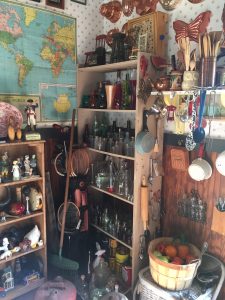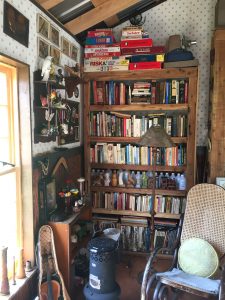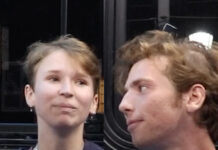Sitting in front of the Fiske Kimball Fine Arts Library at the University of Virginia is a small and simple wooden building, with a tin roof, a porch, and small glass windows. Do not let its external appearance fool you. Within it, every wall is plastered, every shelf adorned, and every desk is crowded with household objects. Housing everything from empty medicine bottles to shells to baby clothes to bird cages, conceptual artist Mark Dion’s Curiosity Shop was described by one student as “[resembling her] grandparents’ storage room.”

The public art exhibit was inspired by 16th century “cabinets of curiosities” – rooms in which members of the upper class would collect and store various geographical, historical, and archaeological artifacts.
At first glance, the seemingly random array of objects appear meaningless. Dion’s goal, however, is for viewers to observe the parts of the whole as stories in themselves. Where did they come from? Why are they here? What could these objects signify about their owner?
One student suggested that perhaps the exhibit represented the different stages of life, from infancy (as shown by an assortment of baby clothes) to old age (as shown by medicine bottles and an outdated map).

Despite Dion’s clear statement regarding the implication of the overall art exhibit, each object and its meaning is ambiguous and open to interpretation by the audience. To see past the clutter and into the creative manifestation of the display requires an active imagination on the viewer’s part.
There is something charming about the atmosphere of the Curiosity Shop. Organized chaos, a beautiful mess filled with potential meanings and hidden stories. Perhaps you will begin to look at your grandparents’ storage room differently.
















